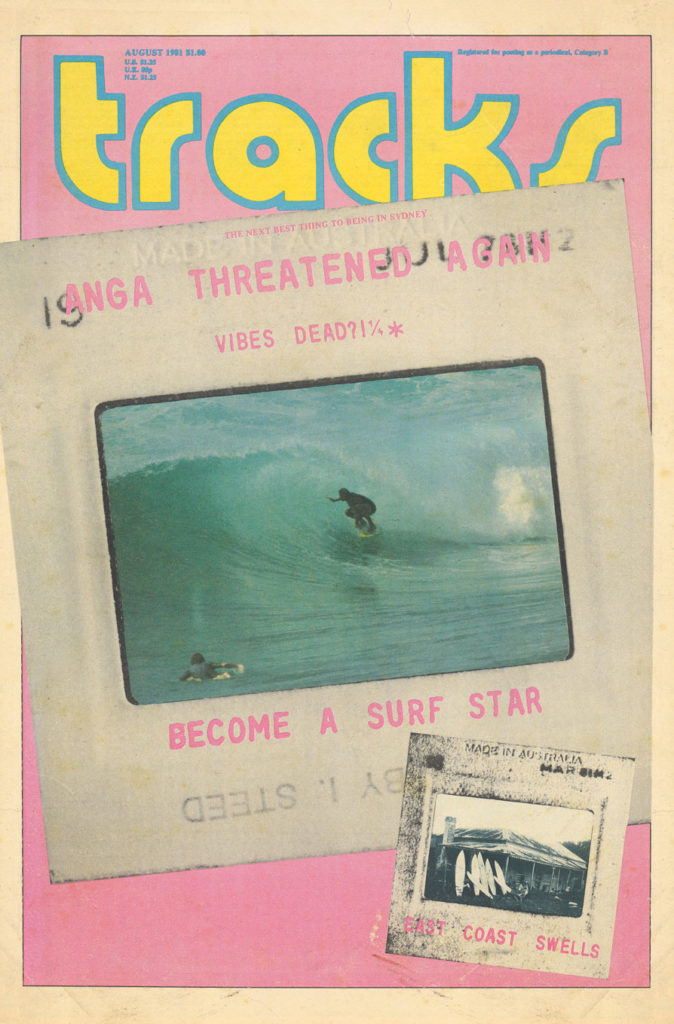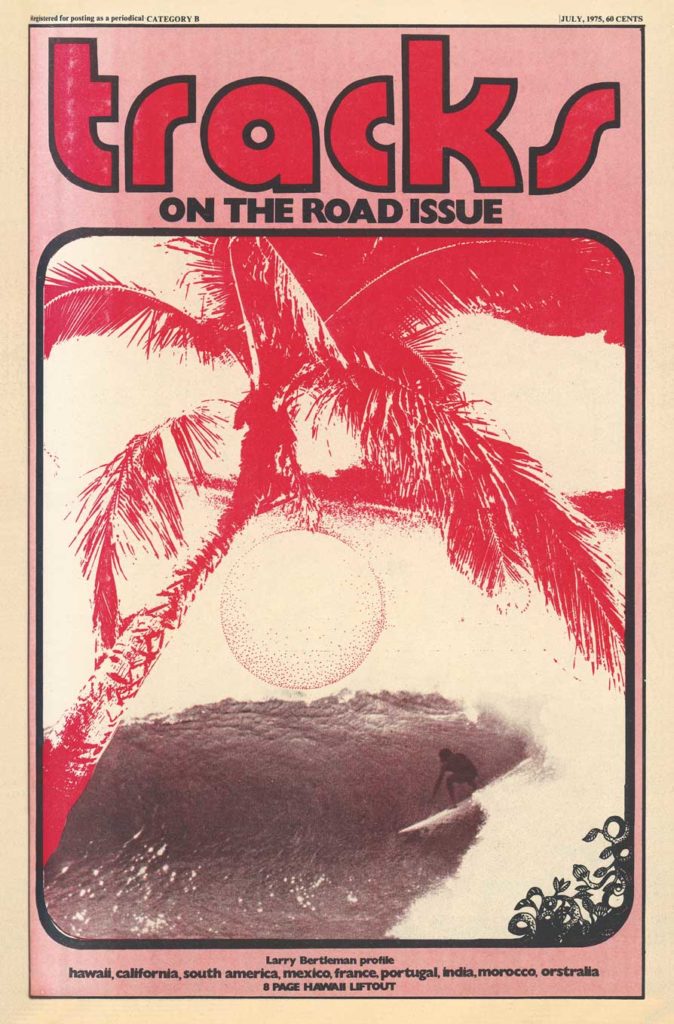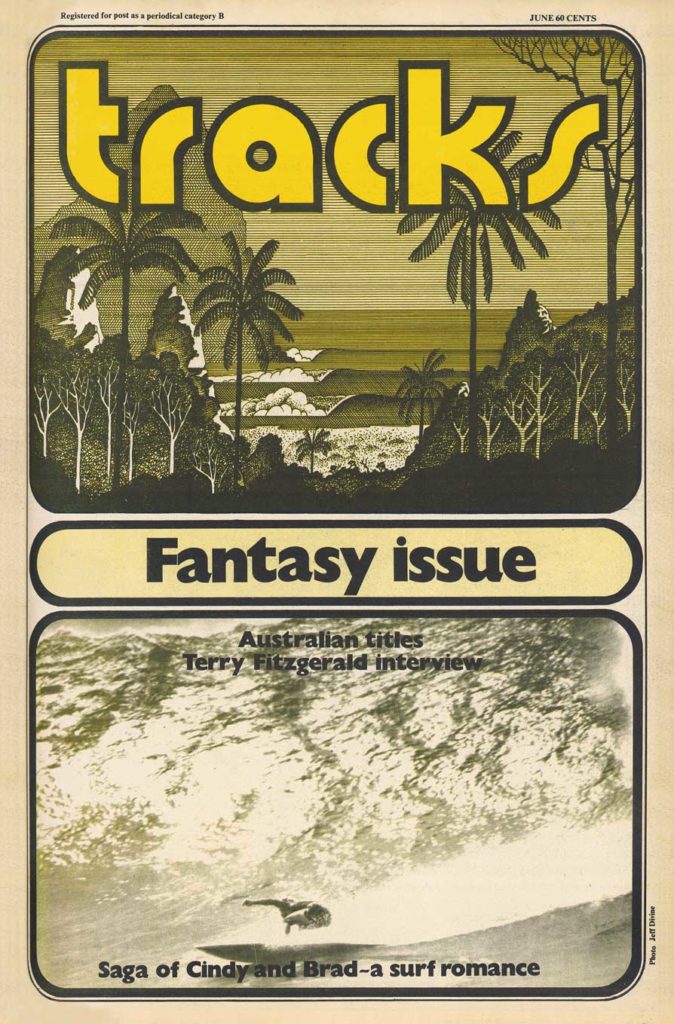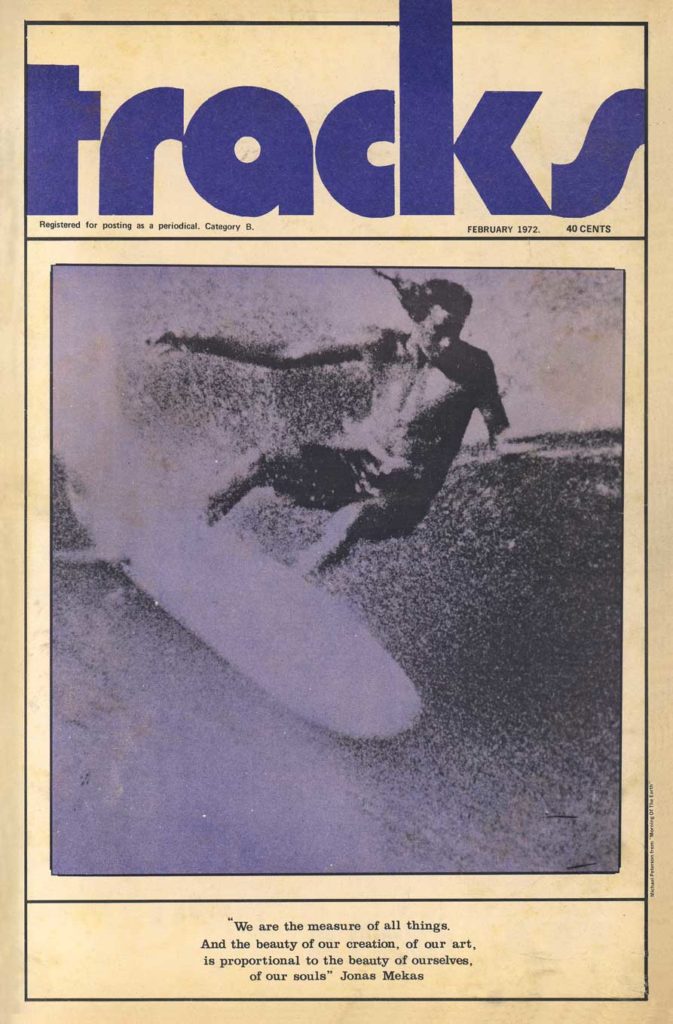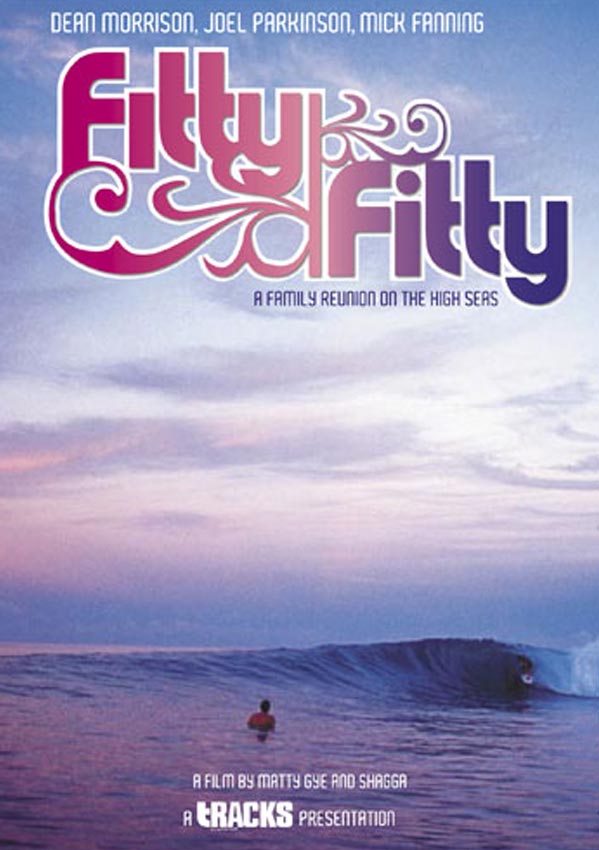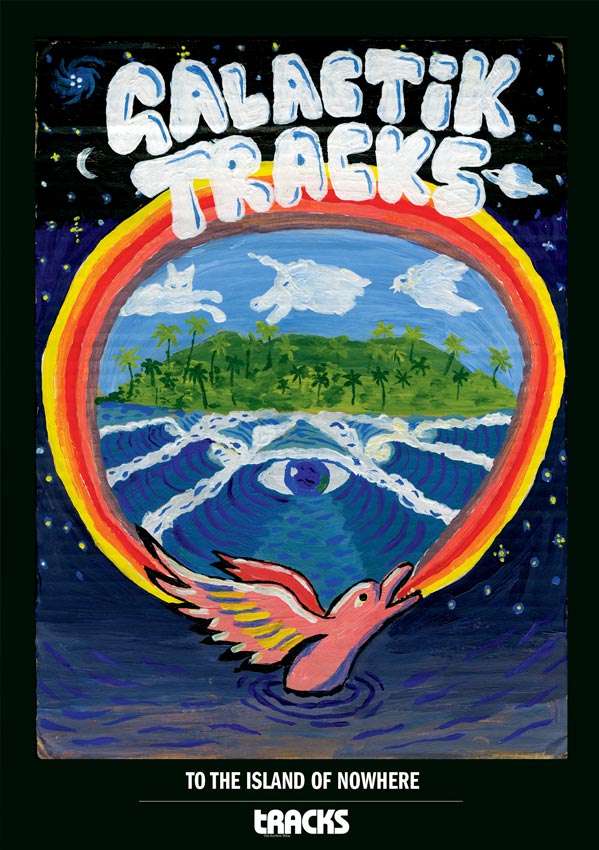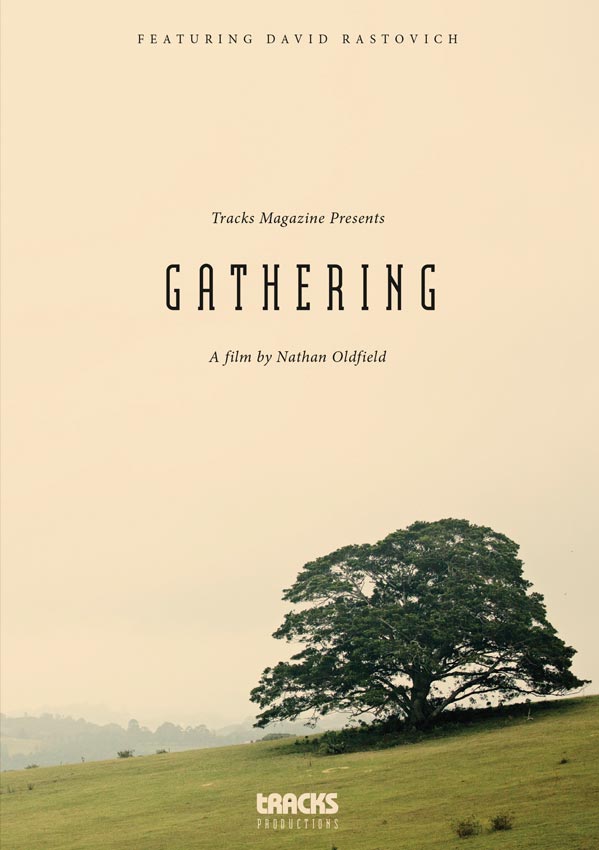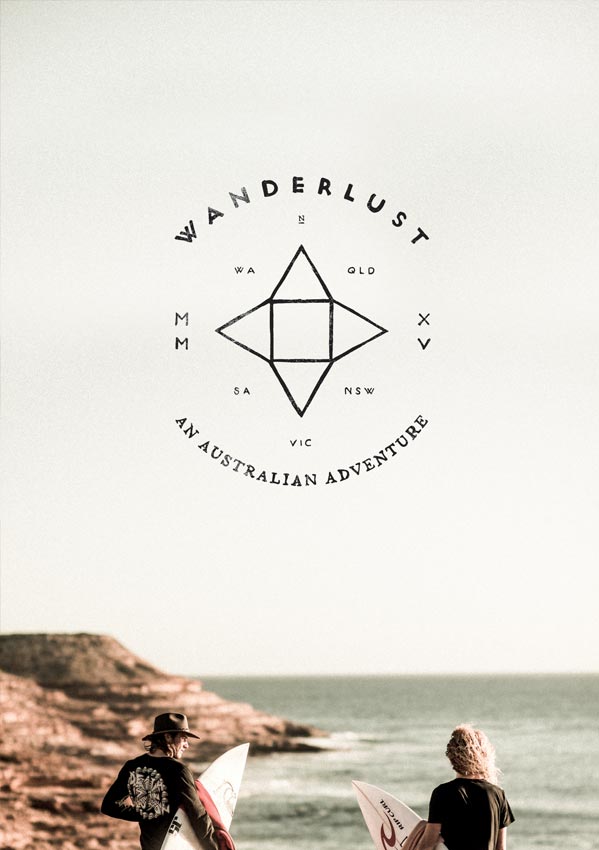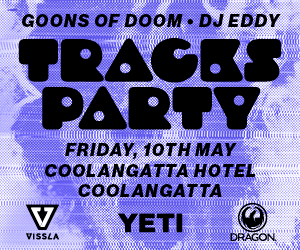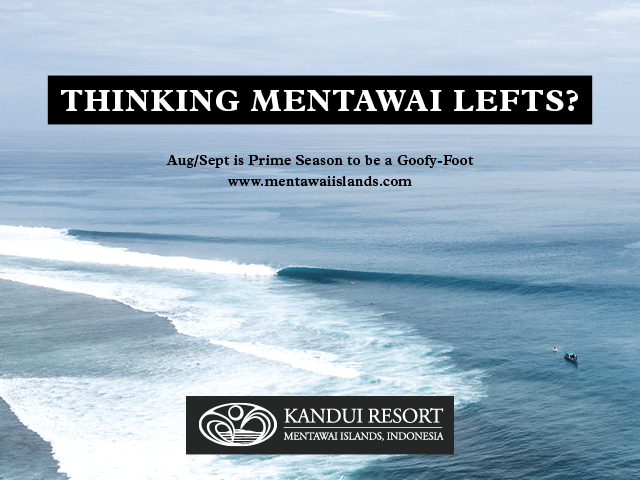Ryan Burch just dropped a web clip that really grabbed our attention. Courtesy of Volcom Stone ‘Ryan Burch….The Rush Of Continuous Rhythm’ shows the lanky Californian taking his quiver of asymmetrical shapes to the lands of Indonesia. The lines he draws are completely unique to anything you’ll see on the World Tour. So we thought it fitting that we offer an in-depth interview with the man himself that featured in the April issue of Tracks earlier this year.
Story by Luke Kennedy
“Oh man. I had to go straight to the bathroom. I’m a so lucky there is a bathroom right there or I probably would have shit myself … I was so nervous… Every time I paddle out at a wave that I’m scared of, I just get the full bowel movement.”
Ryan Burch is sitting on the first floor balcony of the Volcom Pipe House chewing on sugar worms and being totally honest about what it’s like to wake up in front of 10 to 12 foot Pipe knowing that you have to paddle out. Burch, the slightly built, alternative craft aficionado, seems a little out of place at the Volcom house, a locale better known for its beefcake occupants who act as the rough justice tribunal for Pipe infringements. Still, Ryan is doing his best to be one of the boys and sports a fresh mullet haircut, courtesy of Volcom heavyweight Tai VanDyke. Every pro surfer feels the pressure to perform at Pipe. From the front-row houses there are multiple eyeballs scrutinising your every move – the company owners who pay your bills, other pros, aspiring surfers determined to prove they are more worthy of a contract than you and photographers with lenses that never lie. Pipe is a stage upon which you have to perform. For Burch there is an added pressure because he is riding crazy looking asymmetrical craft. Not only is his surfi ng being judged but also the validity of the design trip he has come to embrace. Although Ryan has made giant leaps with his Indonesian symmetrical quiver he knows Hawaii, and more particularly Pipe, is a whole different deal. “If I can make a Pipeline board that people actually go, ‘Whoa that guy’s on to something’ that would be massive,” suggests Ryan as he glances over the Pipe lineup. “I think I have it wrong right now but I think I know what I need to do to get it right. It just might take a little longer to adapt here because you don’t get that much time on a wave.”
How then did this gifted surfer arrive at a point in his life where he was putting it all on the line at Pipe, on a board that looks totally bent out of shape to the naked eye.
Burch grew up in what might be called a heavily segregated surf community. At one end of Cardiff beach in San Diego the short boarders ruled, whipping their tri-finned craft through sectiony beach breaks and marching to the drum of every evolution in performance and design. It was this environment that helped to make Ryan Burch one of the USA’s most successful junior surfers. The talented goofy footer was three-times national schoolboy champion and looked set to wave the star spangled banner on the world tour. However, Ryan had a well-kept secret. Cardiff Reef was considered sacred ground or a well-established long boarding community that included the likes of Joel Tudor. However, a kind of unofficial apartheid existed between the short boarders and long boarders at Cardiff. They pretty much detested one another, which meant Ryan Burch found himself living a dangerous double life.
“I remember one day I was in a Volcom contest at Seaside, South Cardiff, but Cardiff reef was really good. I remember driving all the way home between heats to get my longboard and then driving back home, so that no one would see the longboard in my car, and then going and surfing another heat – and I did that all day. I made the final in the contest but was way more excited about the nose rides I got at Cardiff reef that day. When I finally stopped hiding it, it was like the surfing version of coming out of the closet. I was afraid that these guys who spend all their time getting grumpy on a shortboard would be upset if they knew what I had been up to on a longboard. The fact of the matter I wasn’t grumpy on the short board on the small days anymore. I was having the most fun ever.” Ryan abandoned the idea of chasing a competitive career and has subsequently spent the past few years trying to create a board that delivered the race-track trim of a longboard or fish and the pivoting capabilities of a modern thruster. In the interview below Ryan explains why asymmetrical boards may have given him everything he ever wanted in a surfboard
Why asymmetrical over conventional tail shapes?
To tell you the truth, I’ve tried the conventional boards in the last month and they’ve actually felt scarier than what I’m use to because I’m able to have speed so quickly with my other boards and I can kind of run myself out of shitty situations a lot. I just looked at some footage of myself surfing in Indo and I didn’t realise that the waves were that sucky.
What is it about your boards that deliver that speed?
I’ve always had the straight rail on the toe side and a bigger fi n on that toe side. So that on any down-the-line bigger wave you can just set the line and ride this traverse that’s so drag free because you are not fighting any kind of bend in the curve… Everything’s straight so that all it’s kind of prone to do is kind of hug the face and trim.
Where does your design infl uence for the asymmetrical boards come from?
I rode shortboards and I rode longboards but the thing that blew me away about fishes when I first rode them was that natural glide. I could apply everything from riding a longboard and having that effortless trim and hopefully put some of the shortboard stuff in to it where you are trying to rip the board because the people who introduced fishes to me were people who were trying to ride fishes radically. All they were looking at was the knee boarders and the knee boarders were pushing it as hard as anyone. The fish is always a major influence but it starts to get lost when it’s over seven feet. Did you consciously go out and attempt to try and do something radical with design or was it just an evolution?
It happened from messing around. From where I am in California it’s kind of a little bubble. There are so many board builders and the waves are so slow and user friendly that you have all these people trying to entertain themselves with something that you are naturally going to get bored of after a couple of years. Because our waves for the most part are super predictable and usually slowed down a lot by the continental shelf. All you have to worry about is building speed and then you can do anything because the wave doesn’t really change – it doesn’t bounce or do anything to throw you off. Therefore you benefit from having something that is naturally fast and you can worry about the control later. I just started shaping because other people were doing it and it entertained me when I was at home. Then I adapted it where I was surfing and I just needed to develop fast boards. Every time I went back to a short board I’d have such a funky time that I kind of abandoned the idea that they even existed and all I became interested in doing is adapting the fun I’d been having at home to more and more powerful waves. Consciously I was never avoiding riding conventional thrusters and I’m not denying that design works and I’m not opposed to moving closer to or referring back to that knowledge… there’s a million people making boards and a lot of them seem to be having success with it, so I am not denying that. My boards are based on everything I’ve ridden in the past but to give it to someone who has just ridden thrusters, they probably wouldn’t do them justice … not because they don’t have the skill set but because they don’t have the prior knowledge to adapt to things that are going wrong with the board. Are you trying to build a board that blows your own mind?
100 per cent, to try and push something to its limits and in the back of my mind I always have that thing that people rode fishes and they were tuberiding boards and they were big wave boards. The term has been thrown around a lot but the original kneeboard fishes were meant to surf all the different sorts of waves.
Like a Greenough Spoon was built for a hollow wave?
That’s right … you can’t make it go without a hollow section because there is not enough material there.
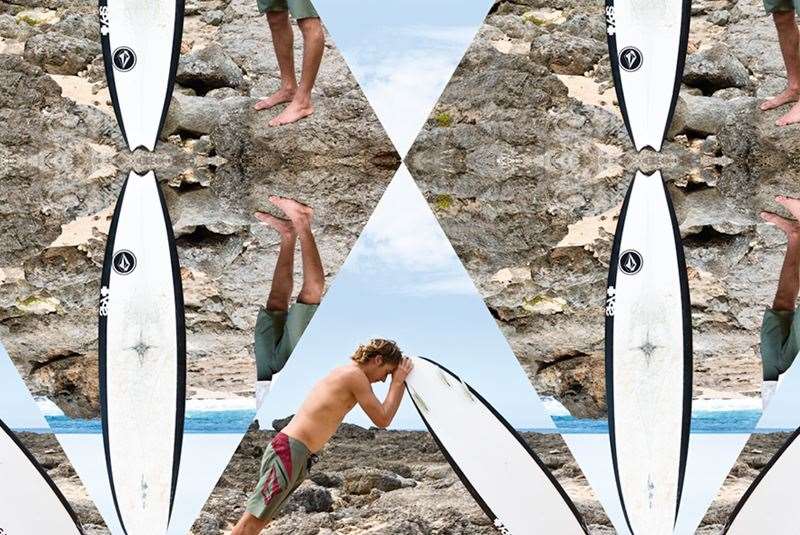 The rail closest to Ryan in the shot where he is standing up, is straighter and designed for down the line trim speed, while the one with more curve is more suitable for throwing snaps in the pocket, now get your head around that. Photo: Christie
The rail closest to Ryan in the shot where he is standing up, is straighter and designed for down the line trim speed, while the one with more curve is more suitable for throwing snaps in the pocket, now get your head around that. Photo: ChristieSo what do you do to a conventional fish to make it go like more of a shortboard?
That’s how that asymmetrical thing got involved. Having that effortless glide down the line with the straight toe-side rail but then when the wave takes you to a place that’s more critical you have curves that are tight enough to enable you to do turns. On a fish all the things that made it easier to go down the line then create problems when you try and lay it on a rail. But if you are dumping a rail over on an asymmetrical rail that has way more curve and way more bottom curve and a fi n set up that is more forgiving then in theory, it’s the perfect combination. That’s just out of heel tow leverage, so theoretically backside it should work the same because your toe is still on the flat rail and your heel on the asymmetrical side. Backside I don’t really like fishes but with the tight curve they kind of roll in the pocket.
So the same board works both ways?
That’s right because it’s built for heel toe movement. A devil’s advocate would say that you are just a really good surfer riding semi-dysfunctional craft and you can make anything look good… But, what I would say is that if you put me in the right wave for the board and then gave me a normal board, then I would surf better on my board. A regular board is not going to allow me to draw the lines that I want to draw. I’m not here to do the most radical move ever I just want to ride the wave in a way that makes me feel like I did something radical. It’s not necessarily like me wanting to do the best tricks or get the highest score in a contest but if I get the right wave on my board it will look good enough to be comparable but I am not drawing from the same common knowledge to even do that. I’m the biggest fan of pro surfing and I’m not as good as them at doing those tricks. I’m not anti anything but when I go surfing, what I do is different – and it’s not too different – it’s just the way that I like to surf. The boards are just a vehicle to transport me on a wave the way I want to be transported. That’s all it is. Where have you had the best results with the asymmetrical boards?
Indonesia for instance has been the most influential place in my surfing because the waves are so perfect and get so good and that’s just a blank canvas and so what that enables you to do is see how you are benefiting from having certain little things. So it’s like a science experiment where you have a constant. You know the wave is going to be the same, so any little design tweak you make you can see the impact it has.
Yeah, totally. Leaving there and going home every year, I can really wrap my head around the lines I want to draw there. I’ve been there years in a row now and I feel like every year has gotten better. My surfing has been better than I could have ever imagined it being there and it’s kind of adapted its own little view. This year was probably the best because there were people saying like ‘holy shit, you’ve kind of figured it out.’ I even had a couple of friends who are photographers going home and having their shapers make them asymmetrical boards. It was creating a buzz where they were going ‘this is the shit, I’m going to try and tap into that’… I’ve got it right for there anyway.
At this point Ryan pauses the interview to show me some footage of him riding Desert Point on one of his asymmetrical craft. Listening to him explain the design I was as sceptical as the next guy, but the footage does not lie. Ryan flies down the line at Desert Point, accelerating to mind blowing speeds off his inside rail and throwing switchblade snaps in the pocket using the more curved outside rail. He makes the whole thing look seamless and ridiculously easy. You have to remember that Deserts is a wave where people generally can only go fast enough to get tubed and nothing else. Yet here’s Ryan outrunning the barrel and turning Deserts into a hot-dogger’s dream. As Ryan put it while we watched the footage. “The only down side was trying to slow them down enough so that you get tubed.”
Are you using machines or shaping by hand? I only shape by hand. To me it seems very easy because all it is a blank and it seems like sculpture to me. Now I’ve learned that I’ve got the skill set to make the tools do what I want the to do. I can shape an asymmetrical board in 45 minutes or something and that’s just from time in the bay and shaping. I don’t need the machine but if I ever need to make 10 of one board or go into production, I totally would.
Have you made an asymmetrical board for anyone else?
Hell yeah, I’ve made a bunch. My friends at home, I’ve all made believers and they’ve all ordered boards off me but maybe they are just trying to be nice to me. One of my best friends is a really good surfer and he’s a pretty critical cut and dry sort of guy. When I first made him one he was like ‘they kind of slide out’. We’ve since adapted boards for him because he’s a little more powerful than me.
Have you had a pro surfer have a go on one?
I’ve had Rob Machado ride a couple and he’s liked them but a lot of the boards I’ve made for people are like the real early ones. I haven’t made anyone any of the new ones. I go back to places where I’ve left boards a year before and they are so trippy for me to ride because I’ve evolved that much… They’re more normal than they look, they ride more normal than they look, the only thing weird is probably trying to program one on the computer because you’ve got all sorts of variables.
So you are thinking about a lot of hydrodynamics as you make these boards?
That’s all you really have to think about, is how the water is going to react to the surface you’ve created… Are you shaping a specific quiver for each location? I had every intention to ship about 20 boards over here but out of those 20 I don’t think any of them are perfect. I brought about six with me and now I’m just going to shape from here… I made a 40-board quiver this year.
How does the shaping process work for you? Do you just put your head down for a block and go for it?
Totally. I did six weeks of like 20-hour days to make the 40 board quiver start to finish … there was little slight variations and you really start to pinpoint the results. Have you ridden every board in your quiver? No not at all. I rented a room where they shape Merricks and Lost boards and I’m there talking shop with all those guys who make conventional boards while I shape. We’re talking about incremental rocker adjustments, rails – how much it tucks – so I really am influenced by those guys who are nitpicking stuff and taking the same basic concept and making it better and better and better. I have that knowledge and know how to adapt that to what I’m doing. If I was just out in the country shaping boards on my own, I wouldn’t be at the same place that I am at today. I’m drawing upon surfboard common knowledge of 2014 to make my asymmetrical board of 2014. Nothing’s completely original in the design elements but the integration is completely unique. So, I’m going to have to have a go of one of your asymmetrical boards before I leave? But you’re not a goofy footer. So everything is around the wrong way. Everything’s that beneficial about it would be backwards [damn!]
In terms of surf culture stereotypes you probably get thrown in the hipster surfer category. Do you feel like there are too many stereotypes? I guess so. But I don’t know why those stereotypes would be bad if everyone’s just doing their own thing. To me so much of my thing is just interaction with people. If you get to know someone stereotypes go away. The only thing that I would hope would not happen is that someone would refuse to be influenced by someone’s ideas because they were afraid they would be labelled as a hipster by their friends. That’s the only time the stereotype is bad, otherwise I don’t give a shit what people think. When it comes down to it, I come over here and mingle with everybody and now I’m learning about boards from all the guys who have been shaping and riding boards at Pipe for years. They all know what they want at Pipe.
So the quest is about each individual surfer working out what they want and need?
Totally.
‘Asymmetrical Trip’ By Luke Kennedy first appeared in the April 2014 issue of Tracks Magazine





